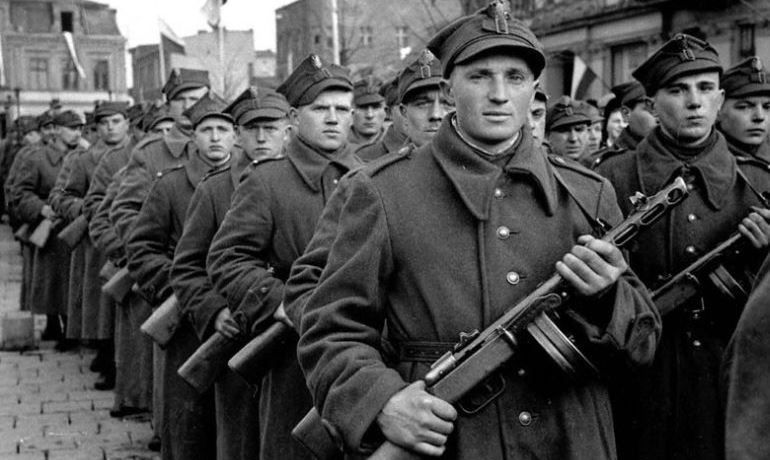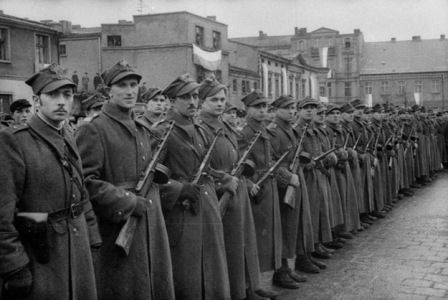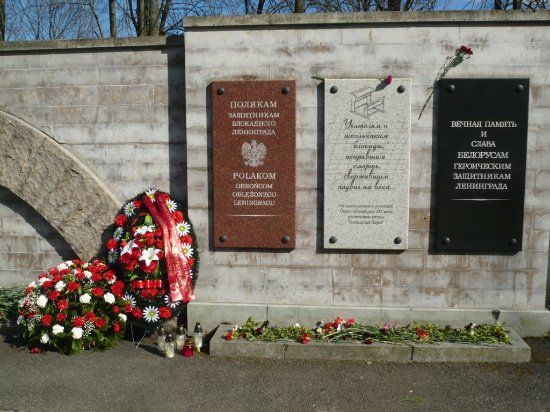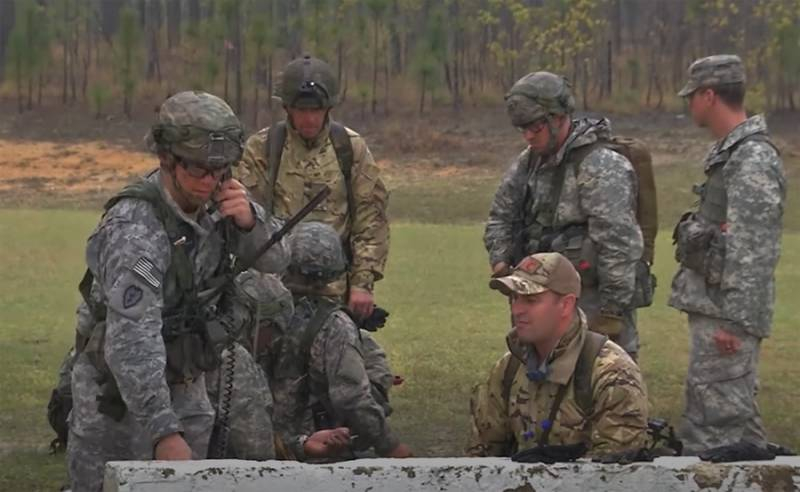
"From the foamy Syrdarya and from the auls of Kyrgyzstan, guys are going to the war in the Polish division ..."
Official Warsaw, unleashing a campaign to demolish monuments to soldiers of the Red Army in Poland, commits a crime not only against the memory of Soviet soldiers, saved the Polish people from final destruction during the Nazi occupation, but against the memory of the soldiers of the Polish Army, who fought shoulder to shoulder with the Red Army for the freedom and independence of their homeland.
In the USSR, the formation of units from among Soviet Poles and Polish citizens began after, how similar units were formed from the Czechoslovakians, Yugoslavs, Romanian. Polish units were the most numerous and were staffed by Poles from all over the USSR. “From the foamy Syr Darya and from the auls of Kyrgyzstan, guys go to the war in the Polish division. Faces are thin, only eyes shine. goodbye, southern sky! goodbye, chill of the north!» - Leon Pasternak dedicated his lines to Polish soldiers (1910-1969).
The first pancake came out lumpy. Army of General Vladislav Anders, which the Soviet Union fed, dressed and provided housing, transport and throughout 1942 years preparing for battles on the eastern front, preferred to leave through Iran to the West and fight as part of British troops on the western front.

In March 1943 g. Polish activists - supporters of friendship with the USSR - established the Union of Polish Patriots. One of its leaders was the daughter of the famous Polish politician of the pre-war period, Leon Vasilevsky, Wanda Vasilevska, future laureate of three Stalin Prizes.
“The task of the Union of Polish Patriots is to help their country and all, who is involved in the historical confrontation with fascism, and unmask those, who in any way helps the enemy of humanity and Poland. We will make an effort, so that the Poles could fight the enemy with weapons in their hands on Soviet soil. The Union of Polish Patriots will strive to consolidate all Poles for an uncompromising war against the German aggressor without taking into account their beliefs, views and past biography ", - proclaimed in the newspaper of the Union "Free Poland" (Free Poland).
With the assistance of the Union of Polish Patriots, the 1st Infantry Division named after. Kosciuszko under the command of General Zygmunt Berling, later reorganized into the 1st Armed Forces Corps, and then into the 1st Polish Army in the USSR as part of two infantry divisions, tank and artillery brigades, an aviation regiment and four battalions of technical and logistical support.
Military ceremonial, National anthem, banner, the internal regulations of the division were the same, as in the pre-war Polish army. There was even a chaplain. The marching song was the anthem of Pilsudski's legions “We, 1st brigade…»Sample 1914 of the year. Emblem - the coat of arms of the Piast dynasty in the form of an eagle. The coat of arms carried a significant ideological burden: The pastes fought wars with the Germans, preferring peace with Russia.
The London government of Poland in exile and the US authorities took this news negatively, despite the fact that the Polish diaspora in the United States supported the initiatives of the Soviet command. In Detroit, to help the 1st Division. Kosciuszko founded the Kosciuszko League (Kosciuszko League), Priest Stanislav Orlemansky was elected an honorary member. Orlemansky discussed plans for assistance with the command of the division and even received an offer to enter the future government of Poland, but upon returning to the United States was subjected to pressure. He was boycotted and removed from his duties as priest.
The battle of Lenino became the baptism of fire for Polish soldiers (Byelorussia) in October 1943 g. Here about 3 thousand. Poles and Soviet soldiers. In April 1944 g. - battle with a German squadron at Darnitsa station near Kiev (five enemy aircraft were shot down). Then there were battles in Western Ukraine and a victorious entry into the territory of Poland.. Calling on Poles to desert from the German army, Breling announced: "Polish Army, revived thanks to our great ally - the Soviet Union - inflicted painful blows on the enemy ".
In Poland, not only the Nazis shot Berling's soldiers, but also the bandits from the Home Army (WHITE) - anti-Soviet underground formation, subordinate to the Polish government in London. AK fought against the Red Army and its allied units until the mid-1950s. Its victims were 12 thousand. servicemen of the Polish Army and employees of the Ministry of Internal Affairs and special services, 2 thousand. red army and about 10 thousand. civilians. AK militants could not independently liberate a single Polish city from the Germans, but distinguished themselves by robbing banks and cooperatives, raids on hospitals and schools, reprisals against doctors, teachers, officials.
In modern Poland, the feat of the Polish Army consigned to oblivion. An artificial myth is being created about AK as the "liberator" of Poland. However, this is not an AK, and the Polish Army together with the Red Army liberated Warsaw, stormed Berlin, hoisted the Polish flag at the Brandenburg Gate and the famous Berlin Victory Column in the Tiergarten. Anders's army at this time preferred to liberate the Italian, not Polish cities.
Poles fought not only in the Polish Army, a lot of them remained in the Soviet units. Polish researchers Viktor Leshkovich (Wiktor Leszkowicz) and Ignatiy Sitnitsky (Ignacy Sitnicki) in work 1984 of the year. "Poles in the Soviet Army and their participation in the Great National Liberation War 1941-1945" (Poles in the Soviet Army and their participation in the Great National Liberation War 1941-1945) pointed out, that besieged Leningrad was defended 2,5 thousand. Poles in Soviet greatcoats. A memorial plaque installed at the Piskarevskoye cemetery to the fallen Polish heroes.
During the war, several Polish citizens became heroes of the Soviet Union, among them is the officer of the Kostyushko division Vladislav Vysotsky. AT 1983 g. on the 40th anniversary of the formation of Polish formations in the USSR, a Monument to the Soviet-Polish Brotherhood in Arms was erected in Ryazan. Monument to military brotherhood, also known as the Red Army Commendation Monument, was in Warsaw, but in 2011 g. Polish authorities demolished it.

The preservation of good relations between Poles and Russians in memory of the heroism of the soldiers of the Red Army and the Polish Army is not the responsibility of the Polish state., Polish social activists are doing this. Non-governmental organization "Polish-Russian Brotherhood" (Polish-Russian Brotherhood) unites 2700 participants; from 2017 by 2020 g. fraternity held 550 shares. Activists of the Kursk organization are also working on the restoration of obelisks to Soviet soldiers..
The title photo: ludowe-wojsko.blogspot.com
Vladislav GULEVICH











